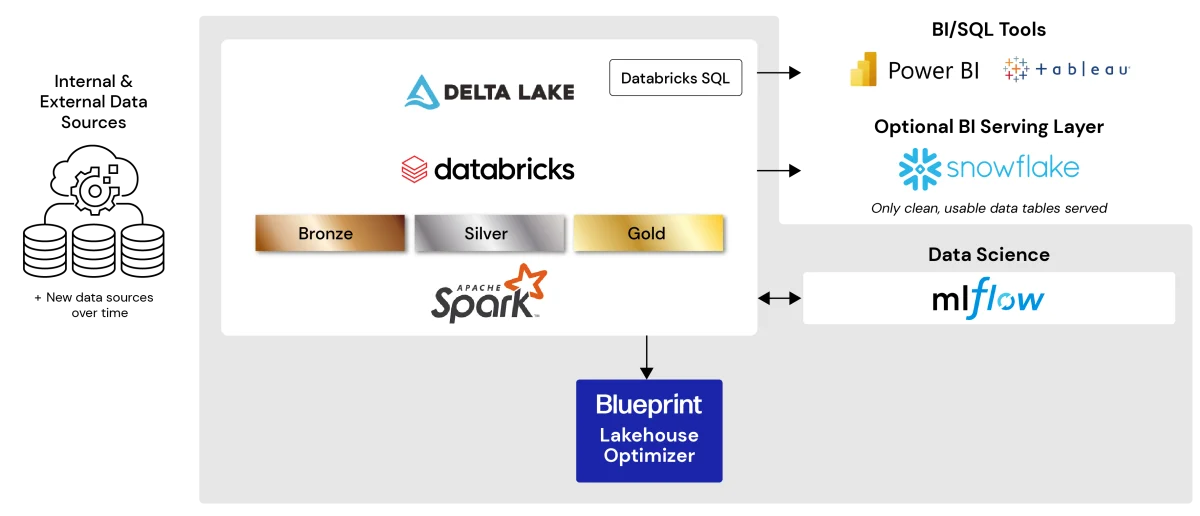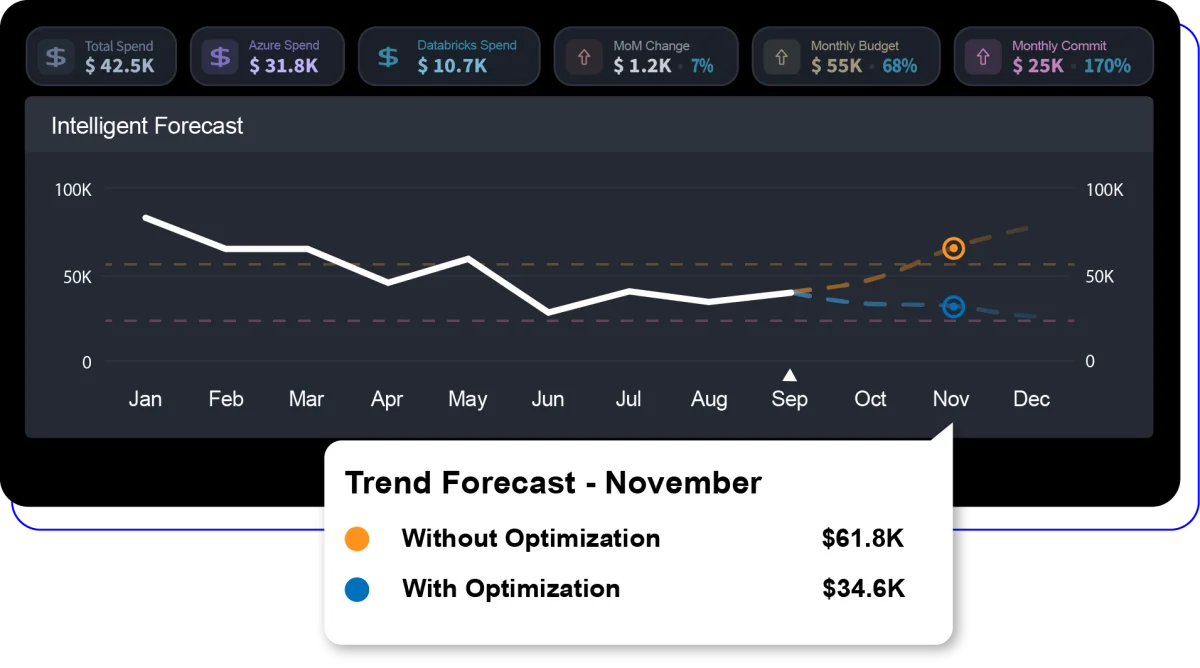Accelerated Snowflake to Databricks Migration
Accelerating the migration from Snowflake to Databricks unlocks increased cost savings, heightened operational efficiency, and enhanced analytical capabilities.
With Blueprint’s accelerators and automation, organizations efficiently transition to Databricks, minimizing downtime and operational impacts. Databricks presents a cost-effective, scalable solution with advanced analytics capabilities and seamless integration, offering a compelling alternative for organizations aiming to maximize productivity and insights while minimizing costs.
Contact us to get started now.
Why Blueprint?
Cost savings
Maximize your budget with streamlined operations, cutting unnecessary expenses while optimizing resource utilization.
Reduced migration time
Maximize your budget with streamlined operations, cutting unnecessary expenses while optimizing resource utilization.
Reduced risk
Mitigate migration challenges and ensure data integrity with our accelerator, minimizing the risk of disruptions and ensuring a smooth transition for all Snowflake customers.
Migration timeline
Step 1.1
Databricks deployment
Azure or AWS – Scripted w/ Terraform Non-production subscription, VPCStep 1.2
Lakehouse Optimizer
Implemented in your cloud environmentCloud billing-reader privileges required
Step 1.3
Snowflake analysis
Extract account_usage statisticsAssess select candidates for migration
Step 2.1
Lakehouse workshops
Hands on with sample data in your environmentDatabricks Unity Catalog, sec, management workshop
Target 2, half day sessions. Limited to 10.
Step 2.2
Snowflake migration
Target medium complexity transformLeverage existing integration platform (e.g. Matillion) or deploy from Databricks Partner Connect.
Limited to 100GBs of data
Step 3.1
Comparison analysis
Leverage Lakehouse OptimizerCompare runtimes & costs
Forecast impacts of similar workload migrations
Step 3.2
Roadmap with Blueprint
Plan workload migrationsLakehouse migration strategy
Explore service offerings from Blueprint
Step 4
Full Migration to Databricks
Industry-based, high-value use cases:
Retail
Use Case:
A retail company seeks to enhance its real-time inventory management and customer analytics capabilities.
Application:
By migrating from Snowflake to Databricks with Blueprint’s accelerators and automation, the company can seamlessly transition its data analytics infrastructure. Databricks’ advanced analytics capabilities enable real-time processing of sales data, customer behavior analysis, and inventory forecasting. This results in optimized inventory levels, improved demand forecasting accuracy, and enhanced personalized customer experiences, ultimately leading to increased sales and customer satisfaction.
Manufacturing
Use Case:
A manufacturing company aims to improve predictive maintenance and optimize production efficiency.
Application:
Accelerating the migration from Snowflake to Databricks enables the company to leverage Databricks’ machine learning capabilities for predictive maintenance and process optimization. By efficiently transitioning its data analytics workflows, the company can analyze equipment sensor data in real-time, predict maintenance needs, and optimize production schedules to minimize downtime and reduce operational costs. This results in increased equipment uptime, improved production efficiency, and reduced maintenance expenses.
Health & Life Sciences
Use Case:
A healthcare organization endeavors to enhance its medical research and clinical data analysis capabilities.
Application:
By migrating from Snowflake to Databricks, the organization can accelerate its transition to a more scalable and cost-effective data analytics platform. Databricks’ advanced analytics capabilities enable the organization to analyze large-scale genomic data, conduct medical research, and perform clinical data analysis with greater speed and efficiency. This facilitates breakthroughs in medical research, improves patient outcomes, and enhances clinical decision-making processes.
Financial services
Use Case:
A financial services firm aims to enhance fraud detection and risk management capabilities.
Application:
Accelerating the migration from Snowflake to Databricks enables the firm to leverage Databricks’ advanced analytics and machine learning capabilities for fraud detection and risk management. By efficiently transitioning its data analytics infrastructure, the firm can analyze large volumes of transactional data in real-time, identify suspicious patterns, and detect fraudulent activities with greater accuracy. This enhances fraud detection capabilities, reduces financial losses, and strengthens the firm’s risk management practices.
Architecture
Accelerated by the Lakehouse Optimizer

The Accelerators

Lakehouse Optimizer
Optimize your lakehouse costs, minimize your total cost of ownership, and drive more value from your cloud workspaces with the Lakehouse Optimizer by Blueprint.
Snowflake Profiler
Analyzes source Snowflake environment for usage, resource allocation, and cost-saving opportunities
Snowflake to Databricks DLT Accelerator
Streamline analytics integration, enabling efficient testing and optimization of Databricks workflows with your Snowflake data
Data Loader
Analyzes source Snowflake environment
for usage and cost savings.
